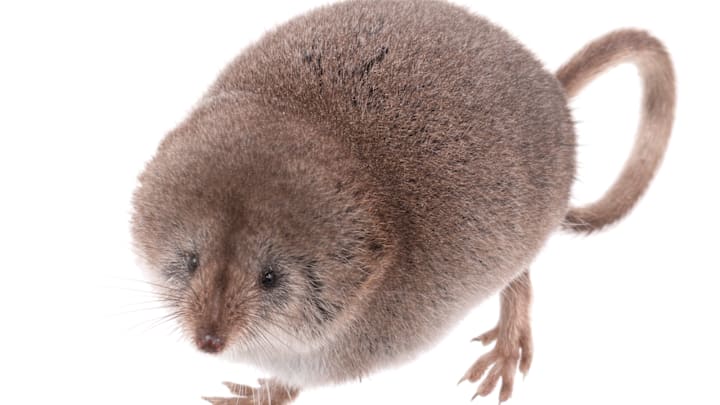The Sierra Nevada is a majestic North American mountain range stretching across California‘s eastern edge. Mammals native to the area range from megafauna—such as black bears and mountain lions—to smaller species, like badgers, skunks, and flying squirrels. One of the shyest animals in the region is the Mount Lyell shrew. As Smithsonian reports, the tiny mammal was finally caught on camera for the first time since it was identified about 100 years ago.
To capture the historic images, researchers Vishal Subramanyan (a student at University of California, Berkeley), Prakrit Jain (UC Berkeley), and Harper Forbes (University of Arizona) had to come up with a plan. The three students traveled to the eastern region of the Sierra Nevada, where the Mount Lyell shrew roams, and set up 150 pitfall traps. They planned to check the traps every two hours because the animal can’t last very long without food. This is due to their their ultra-fast metabolisms, which require them to eat constantly.
The researchers didn’t have to wait long. Subramanyan told the The San Francisco Standard that they caught a Mount Lyell shrew within the first two hours of their search. The group discovered more during the night (when temperatures can drop significantly) by waking up every two hours to check each trap. To document the Mount Lyell shrews, they moved them to terrariums with white backdrops. Even once they were captured, the shrews still proved tricky to photograph: They tend to scurry around instead of striking a pose.
The pictures they ultimately took made history. Previously, the Mount Lyell shrew had been the only California mammal known to science that hadn’t been documented on film. Their small stature (less than 4 inches long) and underground lifestyle have allowed them to evade the spotlight for decades.
Like many other species, the Mount Lyell shrew is threatened by climate change. Eighty-nine percent of the rodent’s habitat is expected to vanish by the 2080s. According to the University of California, Berkeley, the young researchers hope the photographs will draw more attention to the shrews and their uncertain future.
Read More About Animals:
